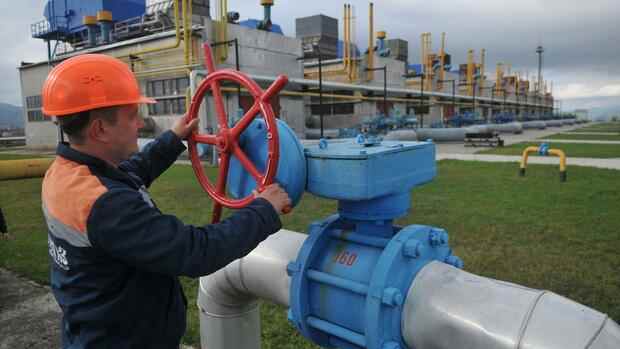The total capacity of the pipelines to Europe is significantly higher than the annual gas imports.
(Photo: dpa)
Dusseldorf The recent escalation in the Ukraine crisis has brought renewed focus to the gas pipelines that supply Europe. On Tuesday it was announced that the federal government had stopped the certification process for the new Nord Stream 2 Baltic Sea pipeline. For the time being, no Russian natural gas will continue to flow through Nord Stream 2 to Germany.
Instead, Europe is dependent on the existing pipelines. Some of them run across the continent – including through Ukraine. But how important are the lines there in order to maintain the supply? And what would happen if war broke out in the middle of Ukraine and major gas pipelines were damaged?
Russian natural gas is currently making its way to Germany via several large pipelines: Nord Stream 1 has been in operation since November 2011 and transports gas across the Baltic Sea, directly from the Russian city of Vyborg to Lubmin near Greifswald in Mecklenburg-Western Pomerania. It has a capacity of up to 55 billion cubic meters per year – just as much as the new Nord Stream 2 pipeline, the commissioning of which has now been put on hold.
This means that the Baltic Sea pipelines can transport significantly more gas than the Yamal pipeline, which has been transporting gas from Russia to Western Europe via Belarus and Poland since 1999. It only has a maximum capacity of 33 billion cubic meters per year.
Top jobs of the day
Find the best jobs now and
be notified by email.
In addition, several pipelines run through Ukraine towards Central Europe. Among them are the “Brotherhood” pipeline with a capacity of 100 billion cubic meters and the Soyuz pipeline with a capacity of 32 billion cubic meters.
This means that the total capacity of the pipelines to Europe is significantly higher than the annual gas imports. According to data from the Research Center for Eastern Europe at the University of Bremen, the total capacity of the pipelines available for Russian natural gas exports to Europe (including Turkey) in 2021 was 288 billion cubic meters. The actual natural gas export volume was therefore only 183 cubic meters.
>> Read here: Oil, gas, wheat: Fear of supply bottlenecks causes price jumps for commodities
Of this, 40 cubic meters flowed through Ukraine. According to the figures, the share of natural gas that flows through Ukraine to Europe has been decreasing for years. In 2000, for example, the amount that flowed through Ukraine was 121 cubic meters and the total amount was 130 cubic meters.
There is therefore a certain amount of leeway should pipelines be damaged in the course of a war in Ukraine. The gas transmission system operator Gascade reports that it is in contact with the other German and European transmission system operators if necessary in order to be able to react accordingly in the event of an infrastructure failure and to ensure the supply. “The German system is flexible enough to react to the failure of individual transport routes and to compensate for them.”
More: EU agrees in principle on sanctions – But Putin presents the West with a dilemma


